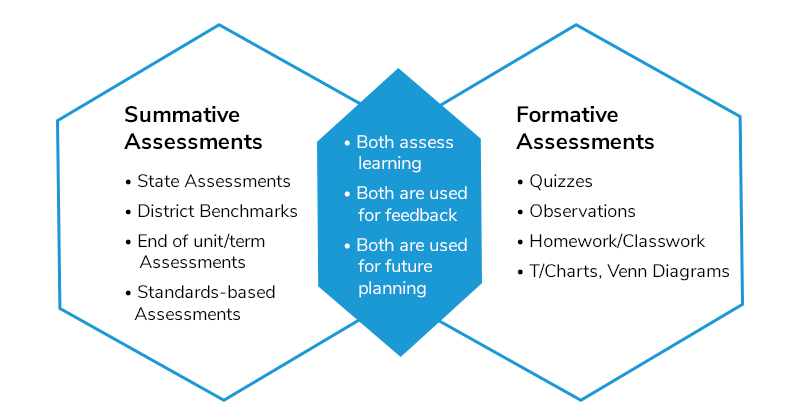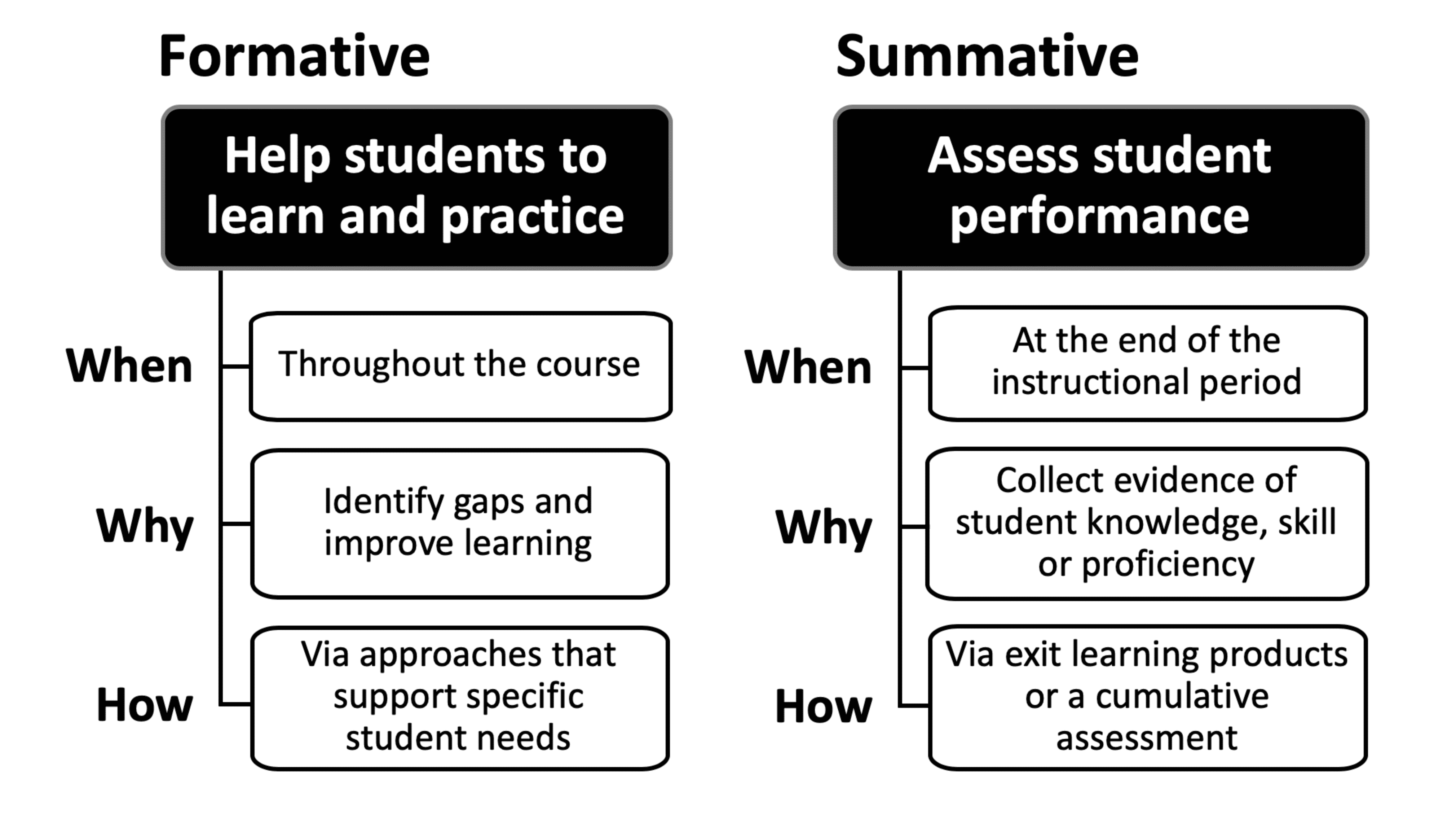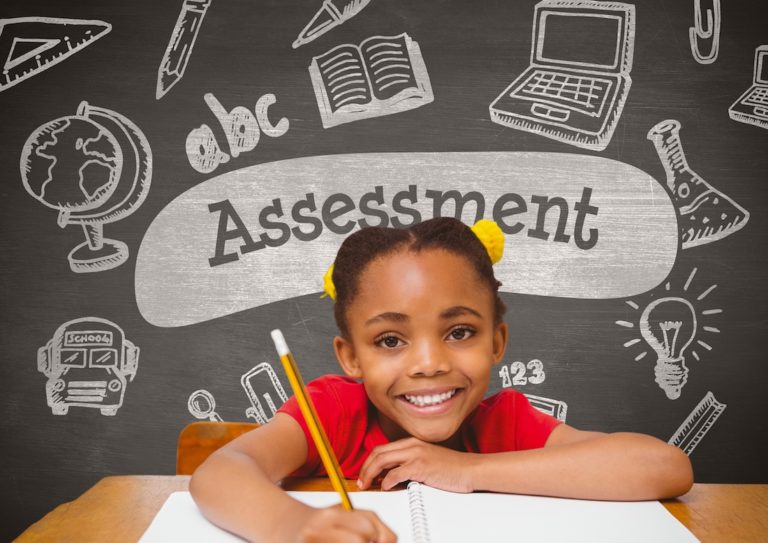Assessment is an integral part of the education system, providing educators with insights into students’ progress and understanding. There are two primary types including formative and summative assessment, which serve distinct purposes in the learning process. In this article, VTJ delves into the key differences between these assessment types and offers recommendations for their effective use.
What Is The Difference Between Formative And Summative Assessment?
What Is The Difference Between Formative And Summative Assessment?
What Is Formative Assessment?
Formative assessment is an ongoing process that occurs during instruction to gauge students’ comprehension and adjust teaching strategies accordingly. The primary goal of formative assessment is to provide immediate feedback to both students and teachers, fostering an environment for continuous improvement.
Read more: 6 Types of Assessment in Education & How to Use Them
How Do You Track Formative Assessments?
Tracking formative assessments can be done using various methods. Here are three approaches you can consider:
- Graded Assessments: One way to track formative assessments is by assigning grades to them. This provides a specific and concentrated view of how individual students or groups are progressing in their learning. However, it’s important to note that graded assessments can be a significant source of stress for many students. If you aim to create a more relaxed and enjoyable learning environment, graded assessments may not be the most suitable option.
- Teacher Observation: Another method is to track formative assessments based on your teacher instinct and observation. By closely observing your students’ performance and engagement during class activities, discussions, and assignments, you can identify which students may require additional support. While this approach relies on your expertise and intuition, it may not provide tangible evidence that can be easily shared with administrators or used to meet specific standards.
- Student Data: Tracking formative assessments using student data can provide valuable insights into how your students are learning. This approach involves collecting non-graded information that reflects their progress, such as frequently answered incorrect questions or areas where they have encountered difficulties. By analyzing this data, you can tailor your instruction to address specific learning needs.
Read more: How to Deal with Difficult Parents: 10 Best Strategies
What Is Summative Assessment?
Summative assessment, on the other hand, is conducted at the end of a learning period to measure students’ overall comprehension and mastery of course content. These assessments are typically high-stakes, such as final exams, standardized tests, or end-of-term projects. Unlike formative assessment, summative assessment focuses on measuring the achievement of learning objectives and determining the level of mastery attained.
How Do You Track Summative Assessments?
Tracking summative assessments involves the following approaches:
- Comprehensive exams: are a widely used method to evaluate students’ knowledge and understanding of an entire course or unit. These exams typically cover a broad range of topics and require students to demonstrate their comprehension of key concepts, theories, and principles. By testing students on various aspects of the subject matter, comprehensive exams provide a comprehensive assessment of their overall understanding.
- Projects: can be an effective way to assess students’ ability to apply their knowledge and skills in a practical context. Projects often require students to engage in research, problem-solving, and critical thinking, allowing them to demonstrate their understanding of the subject matter through hands-on application. This approach encourages students to think creatively and independently, fostering a deeper understanding of the course material.
- Presentations: offer an opportunity for students to showcase their understanding of a topic while also assessing their communication and critical thinking abilities. By presenting their ideas, students must effectively articulate their thoughts, organize information, and engage with their audience. This evaluation method not only assesses students’ knowledge but also their ability to convey complex ideas in a clear and concise manner. Presentations also encourage students to think critically about their topic, as they may face questions or challenges from their peers or instructors.
Read more: Meaningful Feedback for Students: Importance, Tips and Examples
Formative and Summative Assessments Examples
Formative and Summative Assessments Examples
Formative Assessment Examples
- Classroom Discussions: Engaging students in thoughtful discussions about a topic allows teachers to assess their understanding and identify misconceptions. This formative assessment technique encourages active participation and immediate feedback.
- Reinforcement question: At the end of a lesson, students answer a brief question or complete a short activity related to the day’s material. This quick assessment provides insight into students’ comprehension and highlights areas that need further clarification.
- Peer Reviews: Students assess their peers’ work, providing constructive feedback and evaluations. This encourages critical thinking and self-assessment, allowing students to reflect on their own work as well as their classmates’.
- Quizzes and Polls: Conducting online quizzes or polls during class helps teachers gauge students’ grasp of concepts in real time.
Read more: What Is a Teaching Philosophy Statement? (& Examples)
Summative Assessment Examples
- Final Exams: At the end of a course or term, students take comprehensive exams covering the entire curriculum. These exams assess overall mastery and are often weighted heavily in final grades.
- Term Papers or Projects: Assigning students a substantial project or paper that requires them to apply their knowledge and skills gained throughout the course. These projects demonstrate students’ ability to synthesize information and think critically.
- Standardized Tests: State or national standardized tests evaluate students’ knowledge against predefined benchmarks. These tests provide a measure of academic achievement and often influence educational policy decisions.
- End-of-Unit Assessments: After completing a specific unit of study, students take assessments that focus on the content covered in that unit. These assessments help measure understanding of individual topics before moving on to the next unit.
Read more: Leadership Styles in Education: 8 Effective Ways to Lead
Recommendations for Formative and Summative Assessments

Recommendations for Formative and Summative Assessments: Both formative and summative assessments contribute significantly to the educational process
Both formative and summative assessments contribute significantly to the educational process, offering insights into students’ learning journeys and overall performance. Here are some practical recommendations for effectively implementing formative and summative assessments:
Formative Assessment
- Explain grading criteria: Instructors should clearly communicate the criteria for A-F graded papers, encouraging student discussion and reflection.
- Consistent Feedback: Provide timely and constructive feedback to students after each formative assessment. Highlight strengths and areas for improvement to guide their learning process.
- Variety of Techniques: Utilize a diverse range of formative assessment techniques, including class discussions, quizzes, peer assessments, and interactive activities. This ensures a holistic understanding of students’ comprehension.
- Flexibility in Instruction: Use formative assessment results to adjust teaching methods, pacing, and content delivery. Tailor your instruction to address students’ needs and enhance their understanding.
Read more: What is Active Listening Skills: Types, Techniques & Examples
Summative Assessment
- Clear Rubrics: Develop detailed rubrics that outline assessment criteria and expectations for summative assignments. Clarity in assessment standards ensures fair and consistent evaluations.
- Preparation: Provide students with ample time to prepare for summative assessments. Clearly communicate the scope and format of the assessment, allowing them to plan their study strategies effectively.
- Balanced Weighting: Consider the weight of summative assessments in relation to overall course grading. Ensure that assessments accurately reflect students’ mastery of the subject matter.
- Reflection and Goal Setting: Encourage students to reflect on their summative assessment outcomes and set goals for future improvement. This promotes a growth mindset and a proactive approach to learning.
Read more: 13 Types of Students in the Classroom and How to Deal with Them
What’s More Important: Formative or Summative Assessments?

What’s More Important: Formative or Summative Assessments?
The debate between the significance of formative and summative assessments often arises in educational discussions. However, it’s important to recognize that both types of assessments serve distinct purposes and play integral roles in the learning process. Rather than determining which is more important, it’s more productive to understand their individual contributions and how they complement each other.
Read more: 5 Types of Teaching Styles (Their Pros & Cons)
Formative assessments are essential for gauging students’ ongoing progress and understanding throughout the learning journey. These assessments provide immediate feedback to both students and educators, enabling timely adjustments to teaching methods and learning strategies. Formative assessments promote active engagement, encourage self-reflection, and create a dynamic learning environment. Instead of comparing the importance of formative and summative assessments, educators should embrace a balanced approach that leverages the strengths of both types. Formative assessments provide immediate feedback and foster ongoing improvement, while summative assessments offer a holistic view of achievement and mastery. The synergy between formative and summative assessments contributes to a well-rounded educational experience.
Read more: 21+ Best Classroom Management Books for Teachers
Both formative and summative assessments are integral components that work hand in hand to create a comprehensive evaluation system. This combination creates a well-rounded approach that supports students’ growth, learning, and success. By integrating formative assessments into the teaching process and utilizing summative assessments to gauge overall proficiency, educators can provide tailored guidance, celebrate achievements, and ensure that students are well-prepared for their academic journey ahead.
FAQs
What are the two major differences between formative and summative evaluation?
Formative evaluation occurs during instruction to provide ongoing feedback, while summative evaluation takes place at the end of a learning period for final assessment.
Are quizzes formative or summative?
Quizzes can serve as both formative and summative assessments, depending on their timing and purpose.
Is a worksheet a formative or summative assessment?
A worksheet can be either formative or summative, depending on how it’s used within the context of assessment.
Is questioning a formative assessment?
Yes, questioning during instruction can be a formative assessment strategy as it allows educators to gauge students’ understanding in real time.
Can an assessment be both formative and summative?
Certain assessments, like projects or presentations, can have both formative and summative elements, offering opportunities for learning and final evaluation.
Read more: What Is Inquiry-Based Learning (IBL)? Types, Benefits & How to Use
Are you facing difficulties in finding and securing teaching positions in Vietnam? Are visa procedures causing you trouble? Feeling overwhelmed and directionless upon your arrival in Vietnam for teaching assignments? Don’t worry, VTJ’s English Teaching Placement in Vietnam (EPIV) Program 2024 provides comprehensive support to solve ALL the matters.
👉👉👉 Click HERE to request free consultation






